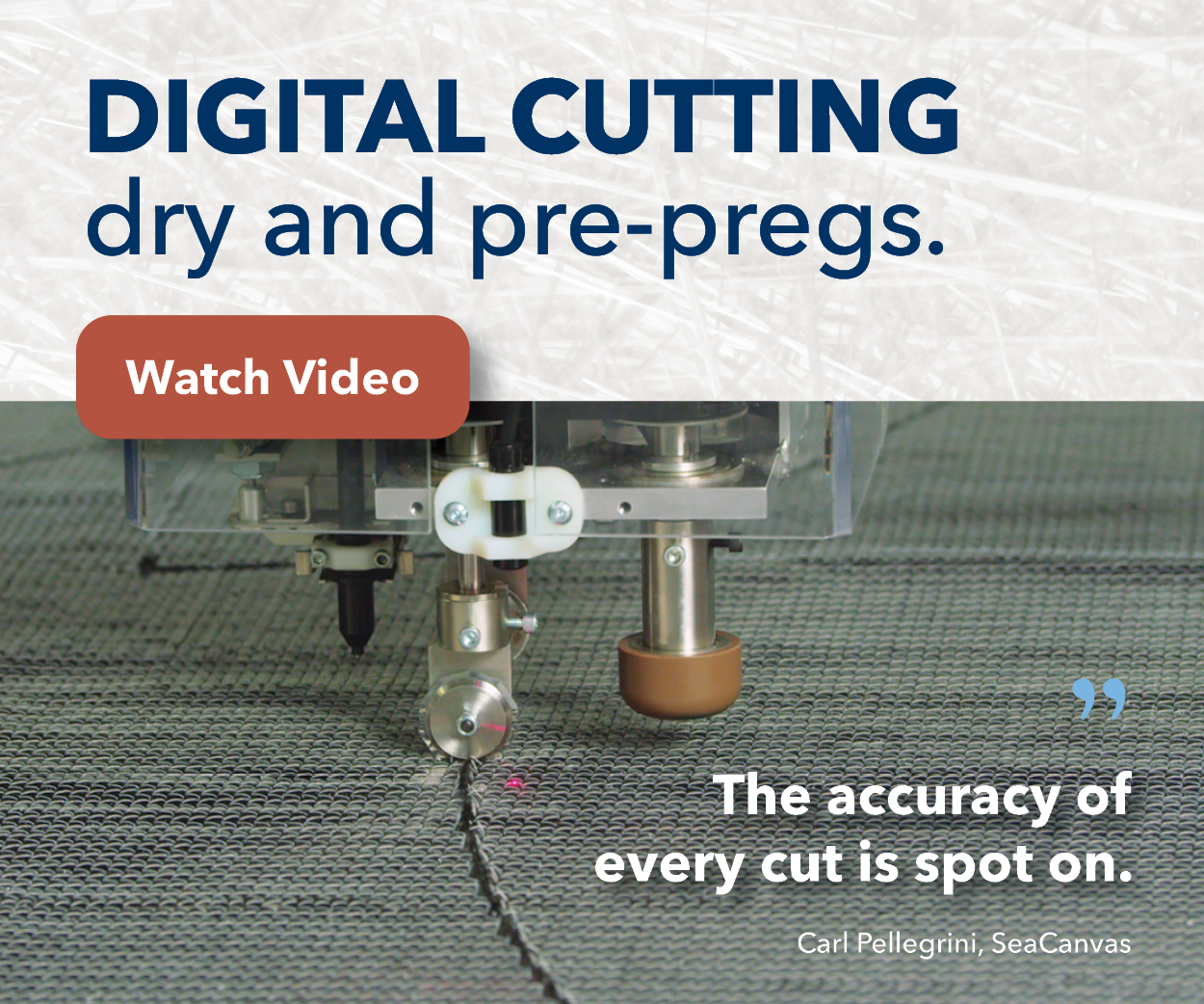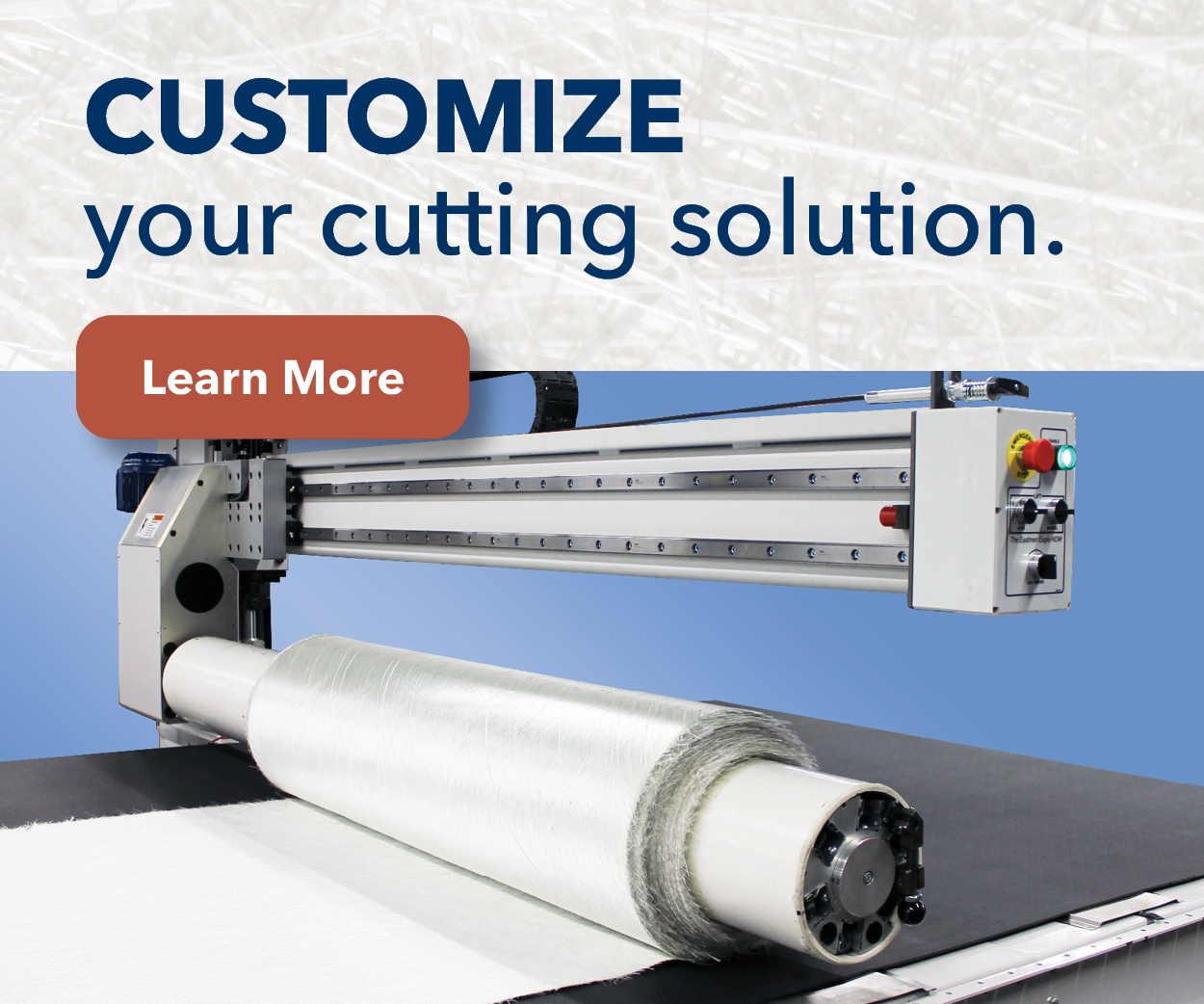Fiberglass Cutting Operation at Hubbell’s Lenoir City Plant Moves to Automation
Sponsored ContentAutomating fabric cutting operations saves Hubbell Lenoir City money and can produce composite products faster at less cost to support infrastructure expansion.
Share
Read Next
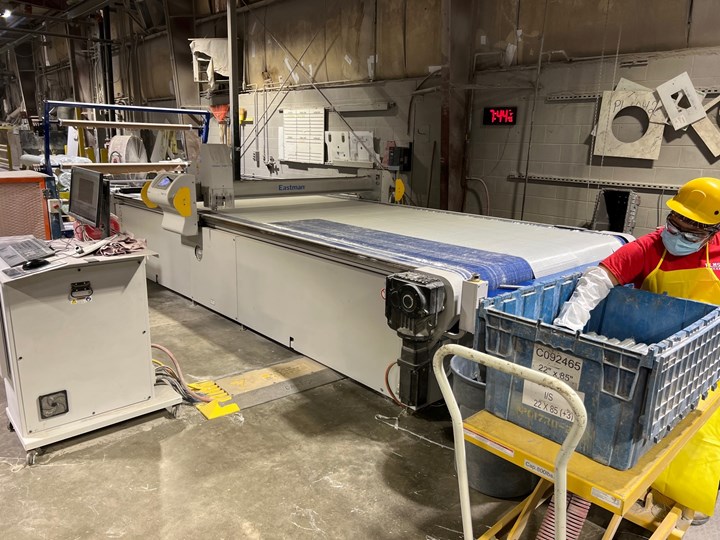
The bipartisan Infrastructure Investment and Jobs (IIJA) Act recently passed by the U.S. Congress promises to be a once-in-a-lifetime investment in the nation’s infrastructure and competitiveness. It provides funding to rebuild and “harden” roads, bridges, airports, ports, and rail systems against the ravages of climate change; fund public charging stations for electric vehicles; increase access to clean drinking water and high-speed internet in underserved communities; and supports investment to tackle the climate crisis. Funding is projected to add an average of 1.5-million jobs annually over the next decade. To support that growth, manufacturers in key industries will need to increase output.
One company is tackling that issue by reducing scrap and cutting costs while increasing productivity by shifting from manual to automated cutting of high-performance (and costly) fabrics used to reinforce its polymer concrete and polymer composite products. The company is Hubbell Incorporated (Shelton, CT U.S.), a leading manufacturer of utility and electrical solutions enabling customers to operate critical infrastructure safely, reliably and efficiently. Hubbell solutions empower and energize communities around the world in front of and behind the meter.
Lighter, Stronger Composite Products
At its Lenoir City, TN, U.S. plant, Hubbell’s Power Systems division manufacturers utility enclosures and drains. Enclosures provide service technicians access points to buried utilities ranging from copper wire to fiberoptic cable for electrical, phone, and cable services while protecting underground and above-ground services from the elements, animal damage, and human mischief. At Lenoir City, Hubbell compounds fiberglass-reinforced polymer concrete and polymer composite daily to produce enclosures, covers, and pads.
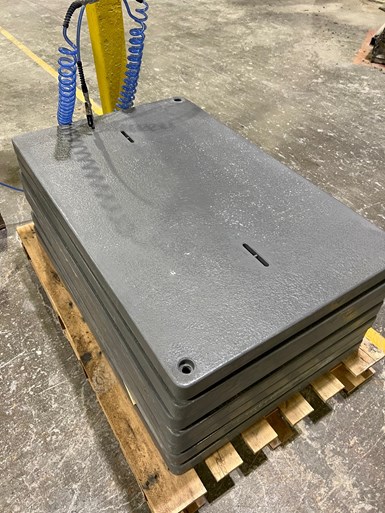
At a third the weight of polymer concrete, which itself is a tenth the weight of regular concrete, Hubbell H-Lite polymer composite enclosure covers are sandwich structures featuring multiple plies of fiberglass fabric — cut in intricate “snow angel” shapes and mixing several different types of fabric at the same areal weight — that are wrapped around balsa wood cores and infused with unsaturated polyester resin via resin transfer molding (RTM).
“Polymer concrete is 10-times lighter than conventional concrete yet four-times stronger,” explains Keith Chudley, Hubbell Lenoir City senior manufacturing engineer. “We produce it by replacing the cement and water in conventional concrete with low-VOC [unsaturated] polyester [UP] resin, which functions as both binder and hardener and is combined with rock sand and limestone. Just like conventional concrete, polymer concrete is great in compression but weak in tension, so we reinforce it with a variety of fiberglass fabrics to provide tensile strength to the matrix.”
He adds that an average of 1.0 lb (0.45 kg) of high-performance fiberglass fabric is used to reinforce each Quazite structure. “Because most of the tension on these structures is on the outside, we put the critical glass on that side as well,” says Chudley, who adds that the fiberglass reinforcement also provides the structures with abrasion and chip resistance and increases damage tolerance in cases where a contractor kicks an enclosure or its cover off the back of a truck.
For enclosures, a single layer of fabric is precut and rolled to facilitate installation. Workers stand the rolled fabric short-end down and alternately apply UP adhesive and stretch and press fabric into the adhesive, temporarily tacking it along the entire inside wall of each metal mold used to form enclosures. The adhesive holds the fabric against the mold wall as thick polymer concrete is poured in. As exothermic cure begins, the adhesive slowly dissolves into the part leaving a residual mold release that facilitates part removal. Hubbell’s featherweight Hi-Lite composite covers are a third the weight of polymer concrete and feature a sandwich structure of fiberglass-wrapped balsa cores with UP matrix.
Productivity Boost
Until last fall, the Lenoir City team cut all its fiberglass fabrics manually either using Eastman Blue Streak straight knives or scissors. To improve this bottleneck, Chudley began exploring options to boost cutting efficiency.
“We looked at several different manufacturers’ equipment before finalizing our decision to purchase from Eastman Machine,” he adds. “What really sold me was both the cutting surface on the C125 automatic conveyorized cutting system and the patternPro software with nesting capability, which we thought would really reduce our scrap.”
Founded in 1888, Eastman Machine Co., Buffalo, N.Y., U.S., developed industry’s first electric fabric-cutting machine and now designs and manufactures a complete line of cutting equipment — including manual cutters, single- to high-ply automated cutters, material handling equipment, and software to edit and finalize digital cutting and nesting patterns — for the global composites industry.
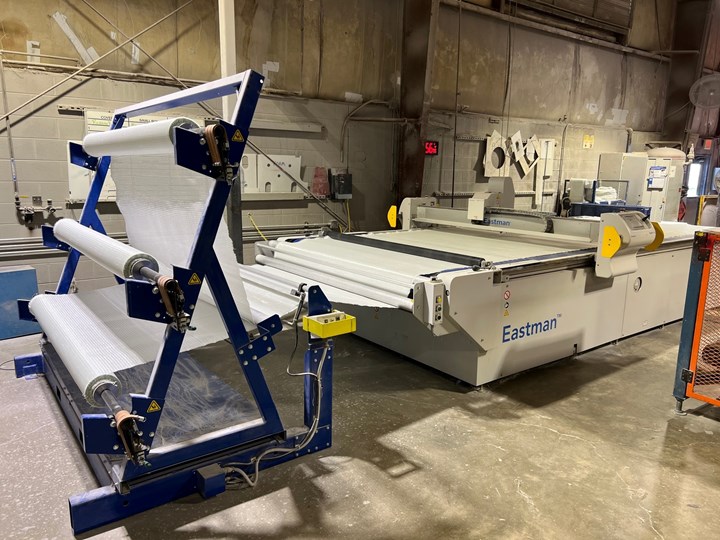
Three different Hubbell plants purchased identical cutting systems from Eastman Machine Co., including a C125 automatic cutting table with heavy-duty tool head, a 3-roll roll stand, and patternPro software to increase cutting and nesting efficiency and reduce scrap from costly fiberglass fabrics. Hubbell can now cut three layers of fabric at a time on this low-ply conveyor, which boosts productivity further.
“In Lenoir City, we replaced manual cutting with the new equipment, so it was a huge step up for us,” notes Chudley. “We now automatically cut intricate shapes that previously had to be cut by hand, so this is a gamechanger for us and represents a big improvement in productivity. Because we selected the heavy-duty cutting head, owing to fiberglass’ abrasiveness and difficulty in cutting, we not only can cut faster, but we can cut three layers at a time, really maximizing our cutting efficiency without any sacrifice in accuracy.”
Chudley adds that his plant has traditionally tracked both fabric scrap and scissor replacement. “We used to have a high scrap rate with these expensive fabrics. However, owing to the nesting efficiency of Eastman’s patternPro software, we’ve significantly reduced waste, which represents real savings to us on top of the productivity gains we’ve achieved. With savings like this, the system paid for itself very quickly.”
Supporting Infrastructure Expansion
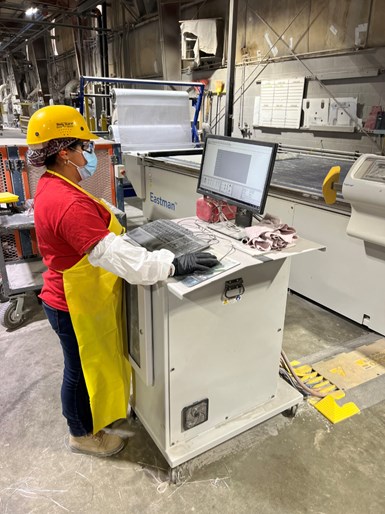
The new Eastman Machine cutting system not only has significantly improved cutting speed and efficiency at Hubbell’s Lenoir City plant — since three layers of fiberglass fabric can be cut simultaneously — but by using patternPro cutting and nesting software, the facility also has reduced scrappage of costly fabric (and eliminated scissor replacement used in manual cutting). This adds up to cost savings and other productivity improvements.
Interestingly, the plant manager at Hubbell’s Rocky Mount, NC, U.S. facility piggybacked on the Lenoir City order and bought an identical set of equipment for his plant, which produces products in both polymer concrete and olefin composites. Hubbell also purchased a third set of equipment for a new plant being constructed in Oklahoma City, OK, U.S. that will produce multiple polymer concrete and polymer composite products. Lenoir City’s equipment started production last fall, Rocky Mount’s this January, and Oklahoma City’s system was delivered in April and initially will cut reinforcements for rotomolded composite with polymer concrete starting at year’s end.
“From a forecasting perspective, the infrastructure industry has always been a prospective market for Eastman,” adds Stephen Wawro, Eastman South Central regional sales manager. “With passage of the IIJA, we’re seeing an increase in domestic production and the need for investments in reliable, automated solutions such as our own. Eastman has been on the forefront of automating our customers’ cutting departments and Hubbell was a pioneer in automation before the IIJA. They’ll be well positioned to take advantage of expanding infrastructure business.”
For more information please visit the Eastman Machine website.

